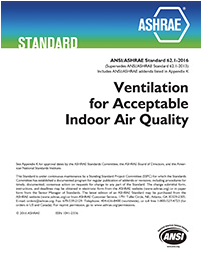In Part 2: Alternative to AC, of this series, I discussed the two traditional options for comfort cooling in an industrial facility and why Indirect Evaporative Cooling (IEC) as an alternative to AC can significantly reduce the cost of comfort cooling. In Part 3, I’ll discuss how Indirect Evaporative Cooling can be paired with a Dedicated Outside Air System (DOAS) unit to lower the cost of cooling outside air.
Dedicated Outdoor Air Systems
 ASHRAE Standard 62.1 prescribes the amount of outside or “fresh” air that needs to be brought into a building to maintain indoor air quality. However, before any outside air can be introduced into a building environment, it first must be filtered and conditioned to the required temperature and moisture level. This requirement has lead to the development of Dedicated Outdoor Air Systems (DOAS) that are specifically designed to filter and condition 100% of the outside air for a building. By focusing the outside air treatment to one system, the DOAS can be customized to treat the specific conditions of the outside air in the building’s location. A DOAS also provides for a more efficient way to take advantage of energy conservation devices such as energy wheels.
ASHRAE Standard 62.1 prescribes the amount of outside or “fresh” air that needs to be brought into a building to maintain indoor air quality. However, before any outside air can be introduced into a building environment, it first must be filtered and conditioned to the required temperature and moisture level. This requirement has lead to the development of Dedicated Outdoor Air Systems (DOAS) that are specifically designed to filter and condition 100% of the outside air for a building. By focusing the outside air treatment to one system, the DOAS can be customized to treat the specific conditions of the outside air in the building’s location. A DOAS also provides for a more efficient way to take advantage of energy conservation devices such as energy wheels.
Another Game Changing Application
Using Indirect Evaporative Cooling to pre-cool outside air entering a DOAS can significantly reduce energy costs. To calculate the cost savings, we compared a DOAS sized to condition a specific volume of outside air to a DOAS paired with an IEC unit to condition the same volume of air in the same location. The initial capital costs of the stand alone DOAS and the DOAS paired with an IEC were equal. However, the amount of energy required to operate the DOAS paired with an IEC was 30% less than the stand alone DOAS. In this particular scenario, the energy savings came from reducing the required AC cooling from 50 tons down to 30 tons.
Using an IEC unit for this application can take advantage of two additional ways to reduce operating costs. The first is to use the building exhaust air in the wet air stream. Doing this will increase the temperature drop that the IEC unit is able to achieve. Second, the condensate from the DOAS can be recycled to the IEC unit to be used as the evaporation water. This will reduce the amount of utility water consumed by the IEC unit.
Conclusion
I hope that you have enjoyed this three part series on Indirect Evaporative Cooling. Whether used as an alternative to AC for comfort cooling or as a DOAS pre-cooler, the Cambridge IEC products provide a significant operating cost savings over AC cooling. If you have an application that could utilize Indirect Evaporative Cooling, the Eldridge and Cambridge team will help you find the best solution to provide a successful work environment for your employees.
Want to review or missed the previous articles in this series?
